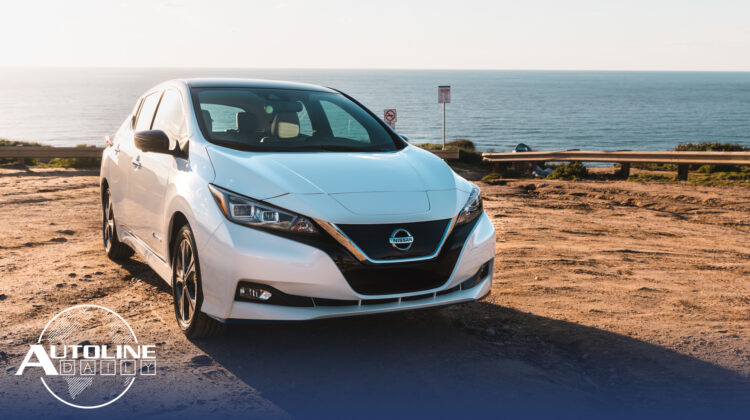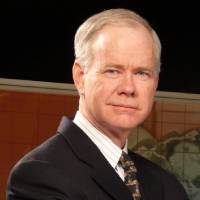
Follow us on social media:
Runtime: 8:15
0:07 China Considers Cutting EV Subsidies Again
0:46 California Slashes EV Incentives
1:45 Mercedes Consolidates Proving Grounds
2:32 1955 Hill Valley McDonald’s
3:11 Lyft Expands Autonomous Testing
3:41 Ford Tests 3D Knitting Seat Covers
4:40 Magna Improves Door Latches
5:20 Mitsubishi Teases Updated Mirage
5:39 PSA & FCA To Keep All Brands
6:14 Carbon’s Unique 3D Printing Approach
Visit our sponsor to thank them for their support of Autoline Daily: Bridgestone.
This is Autoline Daily reporting on the global automotive industry.
CHINA CONSIDERS CUTTING EV SUBSIDIES AGAIN
Life could be getting a lot harder for automakers who want to sell electric cars in California and China. Earlier this year, China cut subsidies in half, from roughly $7,000 down to about $3,500, and sales of battery electrics began to drop immediately. Last month, they plunged 45%. And now Bloomberg reports that China is considering cutting subsidies yet again. No doubt China was starting to worry about the cost. In 2017, it handed out $3 billion to people buying electric cars, and that was before sales really started to get going.
CALIFORNIA SLASHES EV INCENTIVES
Meanwhile, California will cut subsidies for EVs and plug-in hybrids next month. Under the new rules, car buyers can only apply for one rebate for one electric car. Before they could buy two EVs and get a rebate for each one. Moreover, the rebate is capped at cars that cost $60,000. That eliminates Tesla’s Model X and S, the Jaguar I-Pace, the Audi e-Tron and Porsche Taycan. Rebates for EVs were cut from $4,500 down to $2,000. Plug-ins were cut from $3,500 to $1,000 and their pure EV driving range has to increase from 20 miles to 35 miles, or they don’t qualify. Look for a big surge in EV sales this month in California as everyone rushes in to buy one before the subsidies drop.
MERCEDES CONSOLIDATES PROVING GROUNDS
Mercedes used to have proving grounds strewn around the world. Not anymore. It just consolidated all of them to one main proving ground and tech center at Immendingen in southern Germany. Repurposed from its prior use during WWII, the facility is now home to 68km, or about 42 miles, of test roads. Daimler is developing its gas, hybrid, electric and autonomous vehicles here as well as driver assistance tech. The company claims it invested over 200 million euros, or about $221 million, to construct the facility which has tracks simulating global roadways and driving conditions. And we suspect it’s closing down all its other proving grounds as a cost saving measure.
1955 HILL VALLEY MCDONALD’S
Kevin Hisel is a guy we follow on Facebook because he always has humorous posts that put a smile on our face. We liked this one that allegedly shows a picture of a McDonald’s from 1955. And we especially appreciated one of the cars that supposedly showed up in the parking lot.
LYFT EXPANDS AUTONOMOUS TESTING
Lyft continues to expand testing of autonomous vehicles. The ride hailing service says it’s driving 4 times as many autonomous miles every quarter than it was 6 months ago. Soon it will be adding to its fleet of vehicles. Lyft is currently using Ford Fusions, but is also adding Chrysler Pacifica minivans because they offer size and functionality. Lyft is opening a second self-driving facility in Silicon Valley as well, so it can increase the number of tests it runs.
FORD TESTS 3D KNITTING SEAT COVERS
Ford is testing an interesting new process to make seat covers. Traditional seat covers can be made of up of 40 different pieces that have to be sewn together, but by using a process called 3D knitting they can be made from a single piece of fabric. Not only does it reduce production steps and waste material, but different types of yarn can be used and customers can add unique touches like pockets or extra padding. On top of that, built-in connectivity, integrated heating elements, wireless charging and sensors to monitor the driver’s health could be added as well. This is not a new concept. The supplier Delphi developed a 3D knitting machine for seat covers back in the 1990s, with the idea of allowing customers to customize their covers, such as printing pictures of their favorite pet or sports team. Maybe Delphi was just ahead of its time, but the idea never went anywhere.
MAGNA IMPROVES DOOR LATCHES
It’s amazing how much innovation comes out of the supplier industry. And it doesn’t always have to be hi-tech. Magna came up with an improvement that makes door latches operate more smoothly and with less effort. It simply added a ball bearing to the latch. So instead of metal sliding on metal, the latch slides on the bearing. That reduces the opening effort by 40-60%. As automakers add bigger and stiffer door seals to make cars quieter, the opening and closing effort has gone up. This door latch, what Magna calls Comfort Plus, more than compensates for that.
MITSUBISHI TEASES UPDATED MIRAGE
Mitsubishi is going to show off refreshed and updated versions of the Mirage, which is called the Space Star in some markets and the Attrage, which is the Mirage G4 in some areas. As you can see, the vehicles, which debut on the 18th of this month, feature new grille designs and lighting signatures.
PSA & FCA TO KEEP ALL BRANDS
Many have wondered what will happen to all the brands with an FCA & PSA merger. PSA CEO, Carlos Tavares has cleared that up. He says they could keep all of their brands if the two companies merge. Of course, that’s what the top brass says anytime one company buys another: “No one is going to lose their job and nothing is going to get cut.” Until they change their minds.
CARBON’S UNIQUE 3D PRINTING APPROACH
3D printing has made big strides in the last decade but one of the big drawbacks to using it in mass production is the amount of time it takes to make a component. However, a company called Carbon has come up with a solution to speed up the process. On last week’s Autoline After Hours, we were joined by Dr. Joseph DeSimone from Carbon and he explained how its process is different.
Dr. Joseph DeSimone, Carbon
“But basically, chemists grow crystals, right? We grow things. And so we took an approach where we use light and oxygen to grow parts. And we grow them 25 to 100 to 1,000 times faster than traditional 3D printing. And it gives you the power of light. I think of light as our chisel. So, we can make really complex objects very quickly. That was the first breakthrough. The second breakthrough was, how do you get a real part out of a light-based printer? Cause most people think of 3D printing you think of trinkets, you think of brittle plastics. We had a breakthrough where we combined what we call dual-cure reactive resins. Think about epoxy, two liquids come together, a great material. No one ever went down that kind of path because the printers were too slow. Because we’re going really, really fast we knew we can get into reactive liquids, we also made them UV curable. And now we have over 50 different resins, that have the properties to be a final part in a whole host of applications that you can make digitally without molds.”
To learn more about Carbon and its unique approach to 3D printing, you can watch that entire show right now on our website, Autoline.tv or you can find it on our YouTube channel.
But that’s it for today, thanks for watching and please join us again tomorrow.
Thanks to our partner for embedding Autoline Daily on its website: WardsAuto.com

John McElroy is an influential thought leader in the automotive industry. He is a journalist, lecturer, commentator and entrepreneur. He created “Autoline Daily,” the first industry webcast of industry news and analysis.





